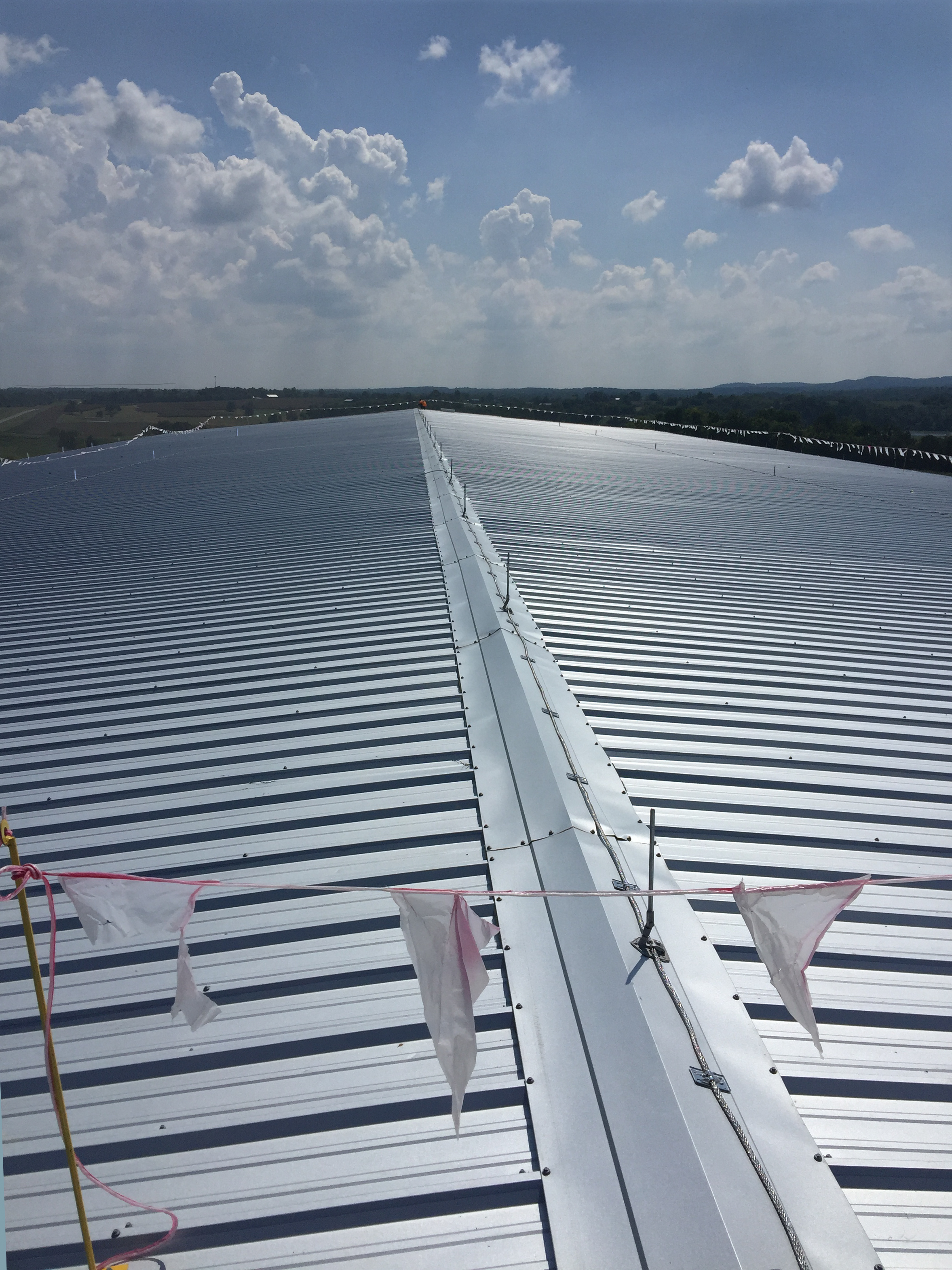When a metal roof is used on a project, it seems to heighten people’s awareness of lightning, and some question whether or not the use of metal roofing increases the risk of lightning strike. Research has shown the materials used in roof construction do not influence the risk of a lightning strike.
Tips and the truth about lightning risks

Lightning protection components on an aluminum or galvanized steel roof should be made from a highly conductive aluminum alloy that is galvanically compatible and listed by UL for use in lightning protection systems. (Photo courtesy of Labeled Lightning)
Lightning is a flow of electrical current between Earth and sky. The result of this electrical flow can be millions of volts. There is still much that is not known about lighting, but most experts agree that a path of ionization begins from the cloud and extends earthward. This path of ionization is the beginning of, and establishes the route for, a lightning strike. The more dramatic part of the strike occurs when electrons race upward from earth to sky along this route, this is the flash of light when any flow of electrical charge is strong enough; it will also arc from one substance to another. It is the resistance to the flow of this electricity which generates heat energy and can cause explosion, fires and other damage.
The probabilities of a strike to a metal roofed structure are no more or less than any other kind of structure. The probability of a strike has to do with height and size of the structure and its surroundings, rather than its construction materials.

The lightning protection system on this distillery rackhouse protects highly combustible whiskey from becoming an alcohol-fueled inferno. (Photo courtesy of A-1 Lightning Protection Consultant Co.)
Probability and Consequence
In assessing the risk involved with lightning striking any structure, two different subject areas should be analyzed. The first has to do with the probability of a strike; the second has to do with consequence of a strike. There is no measure known which can lessen the probability of a lightning strike, except perhaps physically moving the location of a structure.
The probability of a lightning strike is determined by a number of factors:
1. The topography in the area of the subject facility. Probability of a strike is higher if the project is located on a mountain top or hill, as opposed to a field.
2. The size and height of the subject structure. A tall building or one covering more ground area is more likely to be struck than a short or small building. A tall, slender structure (such as a steeple or lighthouse) is also a more likely candidate for a strike.
3. Relative location of the subject structure with respect to nearby larger and taller structure in proximity to a small, short-building will tend to further reduce the likelihood of a strike to the small building.
4. The frequency and severity of thunderstorm activity in the geographic area of the project.
The threats of a strike are affected by the construction materials used for both framing and roof coverings. If these materials are (electrically) conductive, the threat of fire and explosion are both reduced. They will not contribute a fuel source to any fire resulting from a lightning strike.
Because metal roofing is both an electrical conductor and a noncombustible material, the risks associated with its use and behavior during a lightning event makes it the most desirable roofing material available.
To minimize risks associated with damage from a lightning strike, the use of lightning protection systems may be considered. These systems provide for a continuous conductor from sky to Earth (and vice versa) so that the electrical charge is provided a path of least resistance, therefore reducing risk to materials and human life.
National Fire Protection Association’s NFPA 780 is a standard that provides information on the materials and installation of lightning protection systems used to safeguard people and property from fire risk and related hazards associated with lightning exposure.
Jim Bush is vice president of sales and marketing, ATAS International Inc., Allentown, Pa. For more information, visit www.atas.com, email info@atas.com or call (800) 468-1441.

Air terminals must be installed at high points on a structure and at locations prescribed by NFPA 780. Cables used as lightning conductor can frequently be installed under the roof. Where they must be exposed, they should be aligned with ribs or other architectural lines to minimize visibility. (Photo courtesy of Mr. Lightning)






